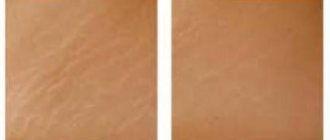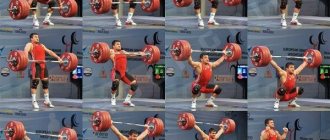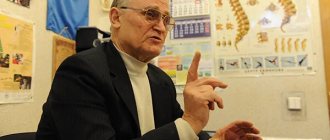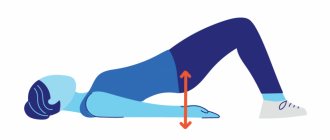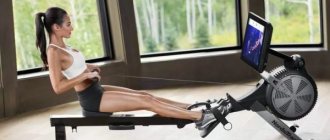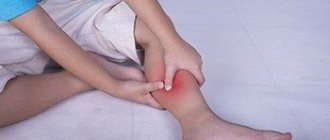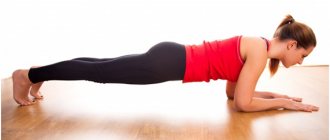Muscle asymmetry is a very common problem. And she is multifaceted! Thus, it happens that an athlete has asymmetrical different muscle groups, and it happens that the asymmetry is noticeable even within the same muscle. Which is primarily due to genetic characteristics. Because the shape of muscles is determined by genetics. And it is impossible to change the exact shape of muscles through training. Therefore, professional bodybuilders use various injection oils . Because they not only allow you to quickly add volume to your muscles, but are also the only way to give them the desired shape. Which, however, often turns out to be its opposite.
Is muscle asymmetry a death sentence? In a certain sense, yes. And you can see this for yourself by watching the absolutely wonderful film “Pumping Iron” from 1977. Which tells the story of Arnold Schwarzenegger's preparation and performance at the Olympia . There is no doubt about his professionalism. After all, Arnold was not only our childhood idol, but also the most successful bodybuilder in the history of the sport. And yet, Arnold’s muscle asymmetry is visible to the naked eye. Especially biceps asymmetry. Which at the same time look absolutely wonderful. Because they are both voluminous and full. And this is the main thing you should pay attention to!
Asymmetry may appear
- in a specific sport (for example, tennis, golf), where one side of the body is involved more than the other; - when an athlete performs the same type of actions over and over again - this is the so-called biomechanical reason for repeated movements in one direction or prolonged poses; - due to neuromuscular imbalance due to the predisposition of individual muscle groups to be strong or weak; - people with limbs of different lengths.
These are some of the possible causes of muscle asymmetry; the curvature of the spinal column also makes a significant contribution - deviation of parameters from the norm. Look at the physiological signals corresponding to muscle activity (EMG) and heat maps of the human body of the ideal and standard case.
Such images help doctors identify patients with soft tissue injuries, imbalances in muscle development, and the degree of spinal curvature.
It is worth saying that there are no ideally “even” people and this is due to the intrauterine development of the fetus. We are all initially in a curled-up position in the womb, and already there the degree of “curvature” of our spine begins to be established.
Therefore, if you think that scoliosis (lateral deviation of the spine from the normal straightened position) is purely your thing, then this is not so, almost everyone has it, only its degree varies.
Diagnostics
Determining the cause of facial asymmetry is most often carried out by dentists or neurologists. If appropriate symptoms are detected, the patient is referred to otolaryngologists, oncologists, endocrinologists, and other specialists. The examination plan may include the following diagnostic procedures:
- Questioning, physical examination
. The doctor establishes the time and circumstances of the onset of the symptom and asks the patient about other manifestations of the disease. Evaluates the severity of asymmetry at rest, during facial and chewing movements. Detects other changes: swelling, redness, blanching, increased local temperature, tumor formations. - Dental examination.
Includes studying the condition of teeth, gums, hard and soft palates, mucous membranes of other areas, and bones of the facial skeleton. Allows you to confirm the presence of diseased teeth, inflammation, injury, suppuration, tumors. - Neurological examination.
The specialist studies the innervation of the facial muscles, asking the patient to perform certain movements: wrinkle his forehead, raise and lower his eyebrows, puff out his cheeks, show his tongue, bare his teeth, follow the movements of the neurological hammer with his eyes. The neurologist then palpates the available nerve exit points. - Otorhinolaryngological examination.
Provides for special research. If pathology of the paranasal sinuses is suspected, echosinusoscopy or diagnostic puncture can be performed. In case of complaints of hearing impairment, audiometry, tuning fork examination, etc. are performed. For vestibular disorders, vestibulometry and rotational tests are recommended. - Radiography
. Taking into account the identified pathological changes, the patient is prescribed an X-ray of the tooth, an X-ray examination of the jaw or paranasal sinuses. In some cases, radiographs of the skull and cervical spine are necessary. - Ultrasonography
. During the examination, sonography of the salivary glands, paranasal sinuses, and soft tissues may be performed. If signs of brain compression are detected, echoencephalography is indicated. - Other visualization techniques
. Most often, CT or MRI are used to clarify the diagnosis and to study in detail the nature of the changes, the volume and location of the pathological focus. For neurological pathology, PET-CT and SPECT of the brain may be prescribed. - Lab tests
. A general blood test determines the presence and severity of inflammation; the results of a microbiological study determine the pathogen and its sensitivity to antibiotics. In case of space-occupying formations, histological and cytological examination of smears, punctures, and biopsy specimens is carried out.
Elimination of facial asymmetry
Muscle asymmetry: what, why and why
Human movement and function require a person to balance muscle length and strength between the opposing muscles surrounding the joint. Most joints in our body have two or more separate and opposing sets of muscles acting on it.
Muscular balance is the equal amounts of opposing forces between muscles that are necessary to maintain a concentrated (centered) position of a bone in a joint during movement.
On the other hand, muscle imbalance occurs when opposing muscles provide different directions of tension due to tightness or weakness.
To understand what we are talking about, look at the following images.
As for the general asymmetry, it can be different, in particular the following:
- front and back - for example, the back lags behind the chest; - left and right - one arm/leg is larger than the other; - upper and lower body - massive upper body on chicken legs.
Regarding muscle groups, asymmetry is most often observed between:
- lower leg and arms; - biceps and triceps; - trapezius and shoulders; - heads of deltas (anterior, middle, posterior); - triceps heads (lateral, medial, long); - forearms and upper arms.
Treatment
The etiology of facial asymmetry is very diverse. Many diseases accompanied by this symptom can pose a serious threat to the patient’s health, especially if treatment is started late. Self-medication in such cases is unacceptable; the appearance of this symptom should be considered as a reason to immediately seek medical help.
Conservative therapy
The treatment plan varies depending on the characteristics of the pathology. In many cases, a special diet is recommended. For dental diseases, treatment of caries, pulpitis, and periodontitis can be carried out. Patients with facial asymmetry are prescribed medications of the following groups:
- Analgesics
. Indicated for severe pain syndrome. Intramuscular injections or tablet forms are possible. - NSAIDs
. Required to reduce the severity of inflammation, swelling, and pain. General action drugs are taken in short courses to reduce the risk of side effects from the liver and gastrointestinal tract. - Antibiotics
. Necessary for general bacterial infections and local inflammatory processes. First, broad-spectrum drugs are used; after receiving the results of microbiological analysis, the antibiotic treatment regimen is adjusted taking into account the sensitivity of the pathogen. - Antiseptics
. Local medications are used in the form of rinses. Recommended in the presence of inflammation, wounds on the mucous membrane, after surgery.
In some cases, drug therapy is supplemented with physical therapy. When treating diseases that cause facial asymmetry, electrical stimulation, UHF, medicinal electrophoresis, and other methods may be prescribed. For oncological pathologies, chemotherapy and radiation therapy are performed.
Muscle asymmetry in the early stages of training
As soon as you begin to perform an exercise, the brain makes an assessment of which side of the body is easier for it to perform the task. The body then establishes a favorable pattern of movement (stores it into memory), as a result of which the increase in strength and volume occurs unevenly - the most frequently used areas increase faster.
Over time, the fine line increases, as a result of which the muscle group constantly “pulling out” the load becomes dominant (stronger, more durable, more voluminous). This is how asymmetry arises.
How to prevent muscle imbalance?
Bodybuilding is not just muscle mass - it is, first of all, ideal proportions and symmetry. Of course, mere mortals do not necessarily become sculptures with ideal circle shapes, but acquiring some aesthetic physique would not be bad.
Actually, let's do this.
So, there are two types of movements that can be done - bilateral and unilateral. Bilateral - when an athlete uses two limbs (arms, legs) at the same time, for example, lifting a barbell for biceps.
Unilateral - when one limb is used, for example, lifting a dumbbell with a hammer grip. Sometimes muscles grow more on one side than the other and this is due to the dominant side of the body. The presenter always tries to override and do all the work. If we talk about arms/legs, then for right-handed people the leading one is the right one, for left-handers, respectively, the left one.
To bring balance, i.e. to pull equally on different sides (and equalize the volumes), you must adhere to the following tips:
Body-motor asymmetries in psychotherapy of psychosomatic disorders
“Somatic map” of emotional and psychological problems of the individual; description of a psychotherapeutic case)
(fragment of the chapter “Psychology and philosophy of the body” from the monograph by V. Mozhaisky “Ecological psychotherapy of psychosomatic and somatopsychological personality disorders)
The idea of bodily-motor asymmetries, as a diagnostic material for working with psychosomatic disorders, was born in the process of my professional collaboration with neuropsychologists and neurologists who studied the functional and organic asymmetry of the child’s cerebral hemispheres in his ontogenesis (B. A. Arkhipov, A. V. Semenovich , 1996). In modern science, the concept of “asymmetry” is rooted in physics, as well as the research of V.I. Vernadsky and the conclusions he made after meetings with physicists Marie Curie and her husband Pierre Curie, who were developing the problem of symmetry and “dissymmetry”. In his work “The Principle of Symmetry in Science and Philosophy,” Vernadsky argues that the ideas of L. Pasteur and P. Curie require not only scientific and philosophical development. In the process of studying this physical phenomenon, the scientist comes to conclusions about the universality of the principle of symmetry, extending it to the phenomena of the microworld, as well as the macroworld - the space of the Cosmos[1].
The patient’s body in this case can also be viewed from this position, as a kind of matrix, where the physical characteristics of a person are captured, expressed in their symmetrical or asymmetrical location relative to certain points and axes. These features, in particular, include hyper- or hypo-tonicity of muscles in various parts of the body. Features of this kind are often not realized by the patient or are perceived by him as something self-evident, familiar, even if it causes physical discomfort. In a body-oriented psychotherapeutic approach of this kind, a problematic (blocked) area of the body is considered as a physical symptom, noticeable during an external examination of the somatic expression of the client’s unresolved emotional and psychological problem.
An observed bodily symptom can be defined, among other things, as a somatic asymmetry of certain parts of the body relative to various axes of the body. Two main types of axes are considered, which are parallel and perpendicular to the line of the spine. Perpendicular axes are divided, in turn, into two types - “lateral” and “frontal”. The lateral axes (there are three of them) pass from one side of the body to the other at three levels - neck, chest, lower back. Frontal (there are also three of them) - from the front of the body to the back at the same three levels. Asymmetry in the leg area is considered separately. The primary goal of the psychotherapeutic process is to harmonize the emotional, psychological, and physical state of the patient and thus balance the geometry of his body.
Some patients, upon learning about these asymmetries, are initially surprised, because their complaints, if they relate to physical well-being, may relate to completely different areas of the body. For example, a patient’s complaint may be associated with unpleasant sensations in the lumbar region, while his body has a pronounced shoulder asymmetry - one shoulder is significantly higher than the other, if you look at the patient’s body from the front - in the frontal projection. The back is hunched, the chest is closed for a full breath, when viewed from the side - in the lateral projection. Moreover, if the patient begins to pay closer attention to these areas of the body, he begins to feel discomfort in the corresponding and neighboring areas of the body. Diagnostic work can thus be directed both to the actual pain sensation and to other areas of the body that are in an asymmetrical state, if the patient expresses a desire and willingness to explore his body.
In both cases, it is important to present a complete picture of bodily blocks and asymmetries, which, as a rule, are interconnected and influence each other. These mutual influences are both negative and positive in nature, since in one case they increase the general painful state and lead to energy depletion. In another case, being physiologically related to each other, they disappear even when therapy is carried out with other blocked parts of the patient’s body according to the principle of a positive “chain reaction”, especially if during the process of research and therapy the root cause block is found and eliminated. This can happen, for example, when removing muscle tension in the neck-collar area, in the lower jaw, pelvic muscles, ankle joint, feet, after which the patient can feel general relaxation and pleasant sensations in various parts of the body.
The fragments of the therapeutic work protocol described below and comments to them illustrate the tactics and strategy of diagnostics and psychotherapeutic work, starting with an examination of the patient’s body.
The patient is a 30-year-old man with an understanding of body-oriented psychotherapy. Primary request: “I would like to better understand and feel myself, my body, ... how my physical problems are connected with emotional, psychological problems.”
This request at the first stage can be attributed to the field of self-research, initially caused not by a specific expressed problem, illness, discomfort, but by the desire to better understand oneself. And although it is obvious from practice that behind such a request there may be certain, unconscious motives of the patient for contacting a psychotherapist, the therapist’s forced “opening” of these motives can provoke in the patient, a kind of “caisson disease”, strong resistance to therapy, even to the point of abandoning it.
Therapist (T) : Try to move around a little, walk with the usual gait that you usually walk with (the patient begins to move around the room and stops)
T .: I will “mirror” you, imitating your movements, slightly strengthening them - exaggerating them. If, looking at me, any associations, images, thoughts arise, you can share (the man continues to move and stop, looking at the therapist and at the real mirror located in the office).
Patient (P) (smiling): Yes, it looks like me, my gait, my posture!
T: Okay, keep moving, trying to enhance what you see with your posture and movement. I will continue to “mirror” you (the patient actively and enthusiastically follows the instructions, exaggerating the posture and movement).
T .: It seems that you are interested in the process. How do you feel about what you see? Try to give any characteristics of what you feel in such a movement, what image you have when looking at yourself from the outside.
P .: I feel tightness in my body, especially in the neck area, and when I look at these poses I get the image of a timid and indecisive person, this is mine, I know about this, I have had this for a long time.
T .: How do you like it?
P .: I take it normally. I have already adapted, and these problems do not really interfere with my life and do not worry me very much (In this case, the patient outlined his “boundaries”. In addition, there was no objective need to work with these problems of “timidity and indecisiveness” at the moment, because they were sufficiently conscious of the patient and did not cause him significant discomfort.At this stage, an attempt to enter the procedural work was carried out through bodily postures, voluntary and semi-voluntary movements, using psychotechnical techniques “mirror” and “exaggeration of poses and movements.”
T .: We can continue the research work (after explaining the essence of this work, the patient agreed to continue the research).
T.: In what position are you most comfortable now, standing, lying, sitting, in motion? (the patient thinks for a while and tries to listen to his sensations in the body, chooses the “standing” position at the first stage of such a study, then “lying” at the second).
During a visual examination of the patient’s body, the following asymmetries became apparent, relative to the vertical central axis of the spine, in the frontal and posterior projection of the body, as well as relative to the horizontal axes at three levels in the lateral projection.
“Standing” position - frontal projection, along three axes, from top to bottom:
- the neck is shifted to the left;
- left shoulder lower than right;
- the body is tilted more to the right from the lower back;
Lateral projection , also in three axes:
- the head, together with the neck, protrudes noticeably forward and is pressed into the shoulders;
- shoulders are stooped, covering and as if squeezing the chest;
- the pelvis is tucked forward.
From the side, the torso resembles an arc with a concave, even depressed, middle part of the body in the chest area, while the chest practically does not move when inhaling and exhaling.
“Lying on your back” position - frontal projection:
- the same asymmetries appeared in the upper body as in the standing position;
- the left hand is more compressed than the right;
- curvature of the body to the right in the lumbar region of the body, as if the patient is bending the body to the right while lying down;
- the right leg appears shorter than the left;
- the feet are at different angles to the plane of the floor;
- breathing is barely noticeable, and there is no respiratory movement in the chest area at all.
The patient had the opportunity, with the help of mirrors, to independently verify the presence of these asymmetries, many of which were unconscious to him, in connection with which surprise arose, which became a motivating emotional background for further work. The patient showed the greatest interest in asymmetry in the shoulder girdle. At the same time, the muscles, especially the left shoulder, even with a superficial glance and touch, were diagnosed as overstrained and were in a state of pronounced hyper-tonicity. The shoulder seemed to be pressing, “repressing” the left side of the chest - the area of the heart.
T : Find a comfortable, convenient body position in which you feel most relaxed (the patient chooses a comfortable position, sitting on a chair).
T .: I will touch the left shoulder area very carefully, if you have any sensations, tell me about it (in this case, the principle of homeopathy “like with like” is used - pressure on the compressed part of the body).
P . (after a light touch and pressure on the shoulder from top to bottom): I began to experience discomfort and unpleasant sensations in the heart area.
T. (stopping the pressure): The discomfort in the heart area has increased, and I see that my breathing is also changing.
P .: It seems to freeze, it’s familiar and unpleasant...
T.: What would you like now?
P .: Change the position (the patient makes several movements with his shoulders, freeing and opening the chest, starting to breathe more deeply).
T .: Looks like something has changed.
P .: Yes, the discomfort has decreased significantly.
T .: How familiar are you with discomfort in the heart area?
P.: I had this as a teenager, my parents took me to doctors, they diagnosed me with “cardioneurosis.”
T .: It seems that this discomfort is manifesting itself at the present time...
P .: Sometimes, mainly when conflicts occur with my wife, but previously the pain arose during conflicts with my mother.
T .: Conflict situations in the past with your mother, and now with your wife, cause you this unpleasant state...
P .: Yes, especially conflicts with my wife, I feel very bad when we conflict, especially when I hear demands and accusations addressed to me... Every time I feel guilty, irritated, angry at myself and at her...
T .: This is an unpleasant situation for you, there are many different feelings when she demands something from you or accuses you...
P .: Yes, I seem to freeze, I don’t answer, I don’t say anything (you can remember how the patient’s breathing froze when he felt cardiac discomfort). I feel a pain in my heart, similar to the one that has arisen now.
T .: Similar feelings...
P .: Even now I am starting to feel this irritation and again discomfort in the heart area, I remembered the last conflict with my wife...
T .: A similar state and similar sensations when you remembered the last conflict... You somehow understand that this state is now “with you”...
P .: Yes, I’m restraining myself again, I’m trying not to show feelings outwardly, it’s like it’s inside me...
T .: And again discomfort...
P .: My usual state, and I don’t feel good...
T .: It’s common for you to be in such a state, to experience unpleasant feelings and hold them back, without outwardly expressing them...
P .: I always behaved like this with my wife and with my parents...
T .: And now in our contact you behave as you are used to...
P. (irritated): Yes! I told you I'm so used to it!
T. (calmly): It seems that now you have allowed yourself to show your irritation...
P. (somewhat embarrassed): I was very irritated when you said that I still behave the same way as always.
T.: And you allowed yourself to show this irritation now...
P .: It’s somehow unusual, I’m a little worried that I poured it on you, it became easier, but there is still a little tension in the body.
T .: This is natural, and it’s normal for me that you allow yourself to show your irritation here. What else would you like now if you continue to listen to yourself?
P. (begins to shake his hands, while breathing becomes deeper): My discomfort in the heart area has disappeared; for me this is a very unusual experience of outwardly showing my irritation. I usually don’t show what I’m worried about, it’s an old habit... I understand that when I allowed myself to show my irritation in words and movements, it became much easier for me.
Subsequently, the process was aimed at working with the feelings of anger and guilt that the patient experienced towards his wife, as well as at understanding the reasons - psychological attitudes and bodily blocks that interfere with emotional expression. The latter concerned his history of relationships with his mother. At the end of the session, the body was re-diagnosed, the geometry of which had clearly changed towards greater symmetry, which was clearly combined with a more balanced emotional and psychological state.
The described case illustrates sequential - “layered” work with a psychosomatic disorder, which begins with an examination of the patient’s body, as well as various strategies for movement in the psychotherapeutic process [2]. Individual and group psychological work aimed at such research makes it possible to detect negative symptoms of the body-motor system at the first stage, correlate these symptoms with emotional and psychological problems at the second, and effectively solve the problem of treating psychosomatic personality disorder at the third stage.
——————————————————————
[1]Rosov, V.A. Vernadsky V.I. and Russian orientalists. 34 c.
[2]Procedural work in this and other cases is also based on two important principles - homeopathic and allopathic: 1) like is influenced by like and 2) like is influenced by the opposite. The ideas and principles of homeopathy were outlined approximately two hundred and fifty years ago by Samuel Hahnemann in his work “The Organon of the Medical Art.” Similar ideas are expounded by George Gurdjieff in his teaching of the “fourth way” (“View from the Real World”).
Increasing the strength of the weak side
When performing exercises, try to consciously place a greater load on the lagging muscles, as if pulling them towards the dominant ones.
For example, if there is asymmetry in the chest, you can perform a bench press with different weights on the sides, the larger one is 3-5% on the lagging one. For example, your left chest is larger than your right, in this case we throw 52 kg on the left, and 50 kg on the right and press in this mode.
You can do the same with dumbbells. Regarding biceps asymmetry, you can do this. When doing a barbell curl, move the arm with the smaller biceps muscle closer to the center of the bar and leave the other one in place.
Breast asymmetry - symptoms and treatment
Most cases of asymmetry do not require any special treatment. In patients with severe psychosocial disorders due to asymmetry of the mammary glands, there are 3 options for correcting the pathology and the psychosocial complications caused by it.
Method 1 - non-medical correction of mammary gland asymmetry. For minor asymmetry, a padded bra cup or a special silicone pad over the smaller breast can eliminate the visual consequences. When looking for a bra, the main thing to remember is that the cups should fit comfortably over larger breasts, not smaller ones. Then the cup and the bone will not squeeze the large mammary gland.
Method 2 - non-surgical correction of mammary gland asymmetry. Elimination of breast asymmetry is possible without surgical techniques using alternative methods if the patient has minor asymmetry. These methods include non-surgical procedures (hyaluronic injections, lipofilling), which are also performed by a plastic surgeon. Despite the fact that they provide only a temporary effect, many patients choose them.
Hyaluronic injections. Enlargement of a smaller mammary gland to achieve symmetry by placing fillers based on hyaluronic acid. Fillers are injected into predetermined areas of the mammary gland, which allows you to fill the missing volume, perform a slight correction of 1st degree asymmetry and slightly change the shape of the mammary gland.
Breast lipofilling. The technique is based on the use of the patient’s own fat tissue. The procedure involves taking adipose tissue from those areas of the body where it is present in excess, and transposing it to the mammary gland that needs volume replenishment to eliminate asymmetry.
Method 3 - surgical correction of mammary gland asymmetry. The key to successful correction is to find out which breast the patient prefers. Such women, as a rule, do not strive to have large breasts. These patients do not tend to evaluate their breast size at all - they just want to be normal, which means having two breasts that look the same. This goal can be achieved with surgery on one mammary gland, but it is better and more correct to perform surgery on both mammary glands. It is important to explain the reason for bilateral surgery to the patient and her relatives. It is critical that they understand the concept: the more similar the procedures performed on each breast, the more likely it is that symmetry will occur and that it will last.
These patients are more susceptible to breast scarring than patients undergoing purely aesthetic surgical procedures.
There are no rules or guidelines regarding the optimal age for this elective surgery. To be sure that breast growth is complete, it is best to advise the patient to wait until she reaches the age of final puberty. However, there are many patients for whom such a delay would be too much of a psychological burden. In this case, surgery is suggested with the explanation that more precise breast correction may be required later. Maintaining a symmetrical result over time, especially with the changes in size and shape that naturally occur during pregnancy, lactation or weight changes, is challenging. However, it is not worth postponing correction until the functional activity of the mammary gland is complete if the patient has severe psychosocial disorders.
Each patient with breast asymmetry is unique, but standard aesthetic surgeries are used to achieve symmetry: augmentation, mastopexy (lift), reduction (shrinking) of the breast, and combinations such as augmentation/mastopexy or reduction/augmentation. Asymmetrical correction may include the placement of two implants of different sizes with different filling volumes and different profiles.
A breast lift or reduction can be performed using any technique that the surgeon deems reliable.
Basic rules for surgical correction of mammary gland asymmetry:
- Find out from the patient which breast she prefers.
- Only perform surgery if the patient is experiencing severe psychosocial problems.
- The operation begins with the larger mammary gland.
- The more similar the operations on the mammary glands, the longer the result.
Contraindications to surgery for breast asymmetry
There is a standard list of restrictions for any plastic surgery.
- The operation is not performed in the presence of any chronic diseases in the decompensation stage.
- Correction of asymmetry of the mammary glands is not carried out during pregnancy and breastfeeding.
- The operation can be scheduled no earlier than six months after the end of lactation.
Preparation for surgery for breast asymmetry
First, the surgeon conducts a consultation. The patient’s requirements for new mammary glands are determined, the types of surgery are selected together with the patient, and implants are selected if necessary. Before surgery, a woman should also consult with an oncologist (or better yet, the operating surgeon is an oncologist) and an anesthesiologist. It is also necessary to undergo tests, have a mammogram, ultrasound or MRI of the breast (as indicated). Before surgery, remove hair in the armpits, and on the day of surgery, do not eat or drink anything in the morning. Without getting out of bed, put on compression stockings of the 1st degree of compression to prevent thromboembolism.
